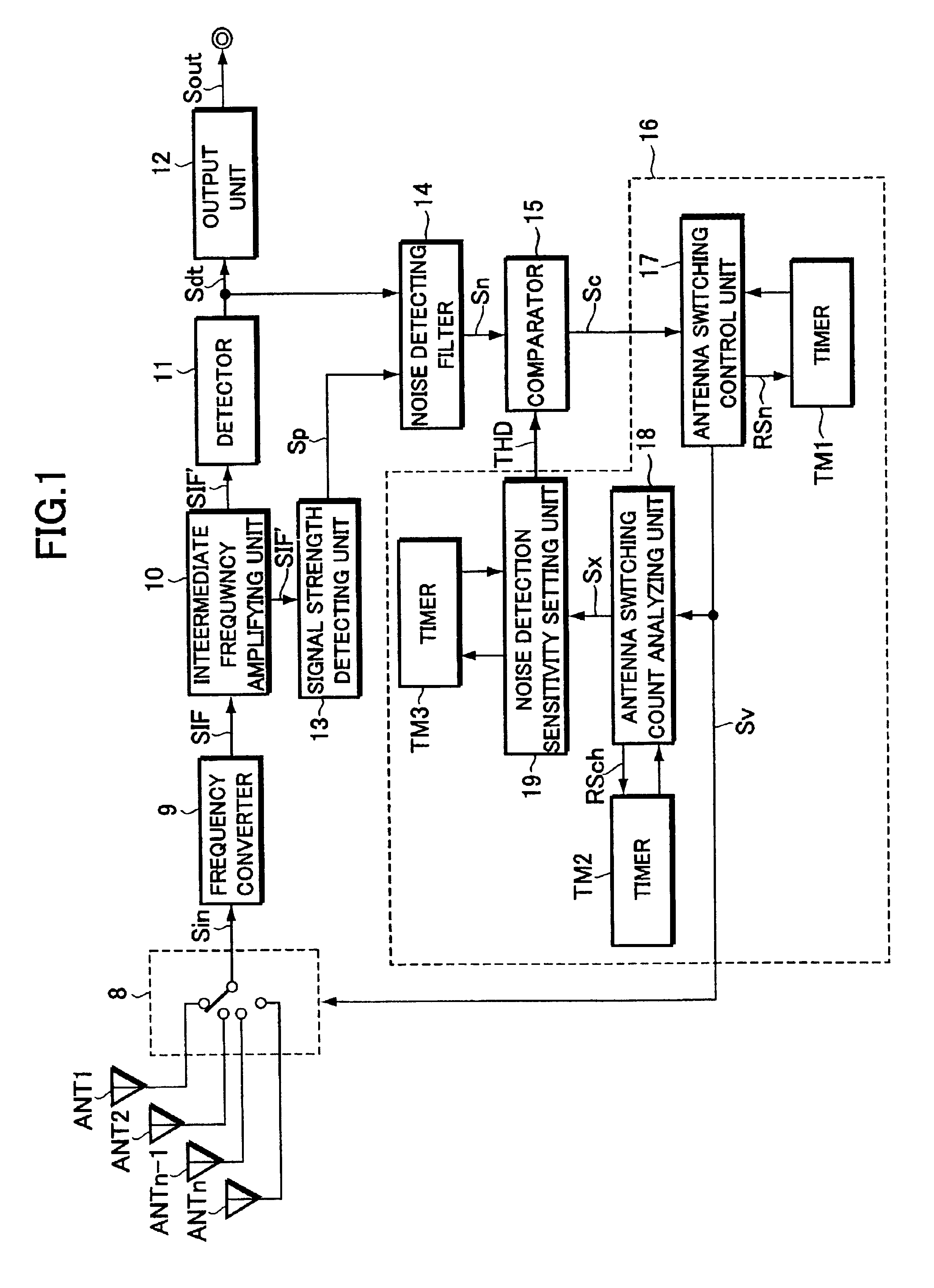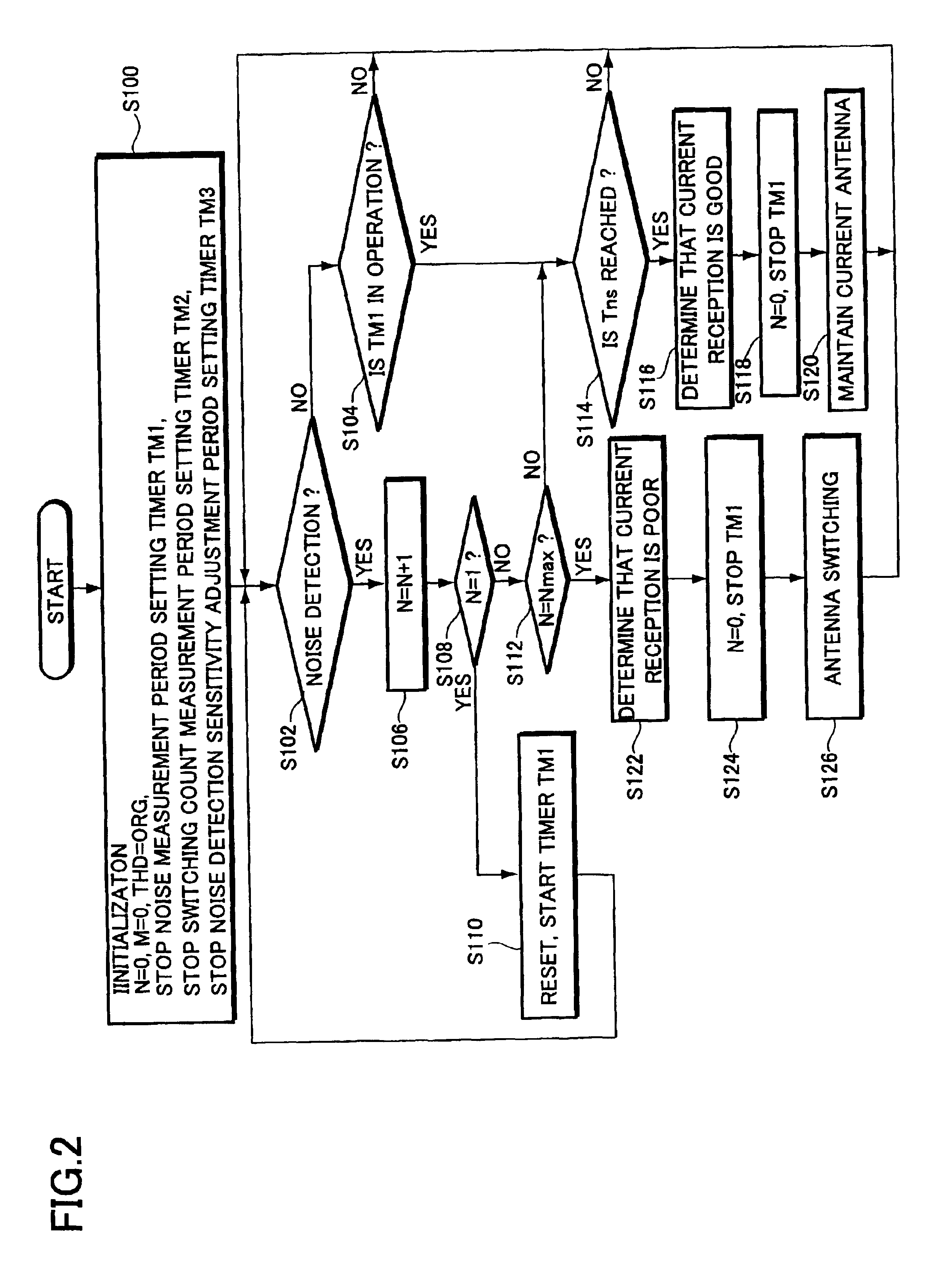Antenna switching apparatus
a switching apparatus and antenna technology, applied in antennas, transmission monitoring, multi-antenna systems, etc., can solve the problems of frequent control errors in antenna switching, difficult to precisely determine the quality of reception, and small diversity effect, so as to reduce noise detection sensitivity and noise detection
- Summary
- Abstract
- Description
- Claims
- Application Information
AI Technical Summary
Benefits of technology
Problems solved by technology
Method used
Image
Examples
Embodiment Construction
[0035]Hereinafter, an embodiment of the present invention will be described with reference to the drawings. FIG. 1 is a block diagram showing the configuration of an antenna switching apparatus of the present embodiment which is incorporated into a receiving system such as a radio receiver.
[0036]In the diagram, the radio receiver or the like is equipped with a plurality (arbitrary number) n of diversity antennas ANT1-ANTn. A switching circuit 8 is interposed between the diversity antennas ANT1-ANTn and a frequency converter 9. The switching circuit 8 makes a switching operation according to an antenna switching control signal Sv supplied from a control unit 16 (which will be described later), thereby establishing exclusive connection between any one of the antennas and the frequency converter 9.
[0037]The frequency converter 9 downconverts a high-frequency reception signal Sin supplied through the switching circuit 8 to generate an intermediate frequency signal SIF. An intermediate f...
PUM
 Login to View More
Login to View More Abstract
Description
Claims
Application Information
 Login to View More
Login to View More - R&D
- Intellectual Property
- Life Sciences
- Materials
- Tech Scout
- Unparalleled Data Quality
- Higher Quality Content
- 60% Fewer Hallucinations
Browse by: Latest US Patents, China's latest patents, Technical Efficacy Thesaurus, Application Domain, Technology Topic, Popular Technical Reports.
© 2025 PatSnap. All rights reserved.Legal|Privacy policy|Modern Slavery Act Transparency Statement|Sitemap|About US| Contact US: help@patsnap.com



